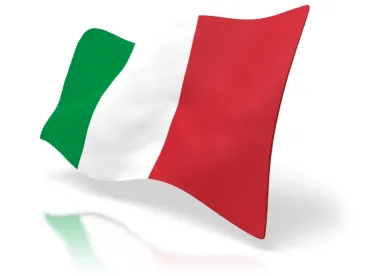The Italian Patent Box regime largely complies with the OECD recommendations to prevent base erosion and profit shifting. Its non-compliant features offer a brief window of opportunity for companies able to take swift advantage of its wide range of qualifying intangible assets.
Many countries have implemented specific IP regimes through their domestic tax legislation that provide a tax benefit for income derived from intangible assets such as patents and designs. Although these regimes generally are regarded positively as tools to incentivize research and innovation, they also have been criticized on the basis they are designed by many countries in a way that generates harmful tax competition between tax jurisdictions.
As a result, the Organization for Economic Co-operation and Development (OECD) has explicitly addressed these regimes in the context of the implementation of the Base Erosion and Profit Shifting (BEPS) Action Plan. The BEPS Action Plan has been developed with the support of the G20 in order to tackle international tax avoidance by enterprises with a broad international consensus.
The “Report on Action 5, Countering harmful tax practices more effectively, taking into account transparency and substance,” delivered on October 5, 2015, defined the features of IP regimes that can be regarded as non-harmful.
At the end of 2014, the Italian Parliament approved the Budget Law for 2015 which, inter alia, introduced for the first time in Italy a Patent Box tax regime, similar to those already in place in many other EU countries. The Italian regime is relevant for both Corporate Income Tax (IRES, at 27.5 percent) and the Regional Tax on Productive Activities (IRAP, ordinary rate at 3.9 percent).
The enactment of this regime took place while the OECD was developing the Report on Action 5 and delivering interim discussion drafts. As a result, the Italian Patent Box is already widely aligned with the principles defined by the OECD.
The Italian Patent Box is a very attractive regime. It provides a 50 percent exemption (30 percent in 2015, 40 percent in 2016) on income derived from the exploitation of a wide range of qualifying intangible assets, after the application of a specific ratio based on the costs borne for the development, acquisition, enhancement and maintenance of those intangibles. The incentive is determined according to a proscribed formula (see box).

Furthermore, the Patent Box grants a full exemption from taxation for capital gains arising from the sale of the qualifying intangible assets. The sole condition is that 90 percent of the consideration obtained from the sale is re-invested in the maintenance, enhancement or development of other qualifying intangible assets.
The Patent Box regime is optional and requires a five year irrevocable opt-in.
Scope of Application
In theory, any taxpayer carrying out a business activity in Italy, either as a tax resident or through a permanent establishment located in the country, is eligible for the regime. The sole requirement is, however, a substantial one: the taxpayer must be undertaking a qualifying research activity that leads to the creation of a qualifying IP asset. If only non-qualifying research is carried out, or no qualifying IP is obtained, no benefit is granted.
The true strength of the regime resides in the wide range of intangibles that qualify:
-
Industrial patents, biotech inventions, utility models, patents for plant varieties and designs for semiconductors;
-
Business, commercial, industrial, and scientific information and know-how that can be held as secret and the protection of which can be legally enforced;
-
Formulas and processes;
-
Legally protected designs and models;
-
Software protected by copyright; and
-
Trademarks, including collective trademarks, either registered or in the process of registration.
Calculating the Costs
In compliance with the guidelines developed by the OECD, it is necessary to apply a formula to the identified IP income. The formula considers all the costs borne in order to acquire, develop or maintain the IP in order to reduce (or rule out) the tax incentive when the taxpayer bears the following non-qualifying costs (tainted costs) related to the intangible asset:
-
Research and development costs outsourced to companies or other entities belonging to the same group of the taxpayer.
-
Costs of acquiring the intangible from related or unrelated third parties.
The formula is as follows:
-
The denominator includes all the costs incurred by the taxpayer for the purpose of acquiring, developing and maintaining the relevant IP.
-
The numerator includes the same kind of costs included within the denominator, but the tainted costs are computed only up to an amount equal to 30 percent of the other qualifying costs.
Income Derived from the IP Asset
The calculation of the income that can be imputed to the IP can be relatively simple when the intangible is licensed to third parties, since the royalty paid to the IP holder by the licensee constitutes the primary item to be considered.
More complex calculations are required when the IP is exploited internally. The use of transfer pricing methods is required to provide a reliable calculation of the portion of income internally generated that can be attributed to the IP. In these circumstances, the determination of the eligible income has to be granted through an advance ruling by the Italian.
Agency of Revenue, which can be fairly time consuming. It is likely that the agency will see an increase in requests for rulings under the new regime, which will undoubtedly slow the process further. For this reason, while the tax benefit can only be taken after the ruling is granted, the benefit will be retroactive to the fiscal year in which the ruling request is filed. This is why filing during 2015 was recommended for companies wishing to fully exploit the benefits of the Patent Box.
Non-Compliant Features
It is the broad scope of the eligible intangibles that makes the Italian Patent Box non-compliant with the OECD principles. The OECD has explicitly stated that marketing intangibles cannot qualify for IP regimes, but the Italian Patent Box includes trademarks. Furthermore, the OECD Report has stated that intangibles, other than patents and copyrighted software, can be eligible only:
-
To smaller taxpayers (basically, small-and medium-sized enterprises, with €50 million overall turnover and €7.5 million of turnover attributable to the intangible);
-
If the relevant intangible is certified by a public agency (other than the tax administration); and
-
If the relevant intangible is non-obvious, useful and novel.
The last requirement also gives rise to the question of whether or not even designs and models, other than utility models, can be included in a fully compliant regime.
The OECD has, however, also defined some transitional rules (and some anti-avoidance rules) in order to allow EU Member States to amend their domestic legislation in accordance with these principles.
The OECD has stated that non-compliant regimes must be repealed by June 30, 2021. It has also declared a ban on “new entrants” to existing non-compliant regimes, stating that no new opt-ins are allowed after June 30, 2016. As a consequence, taxpayers currently have a one-off, brief opportunity to benefit from the Italian Patent Box in relation to their trademarks, know-how (for large enterprises) and possibly even models. If they are willing to take this opportunity, they must opt-in by June 30, 2016.




 />i
/>i

